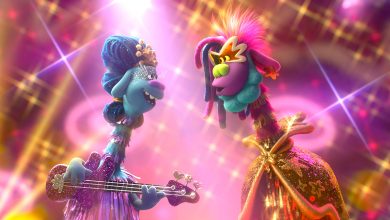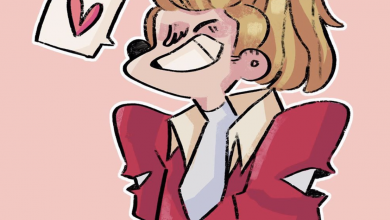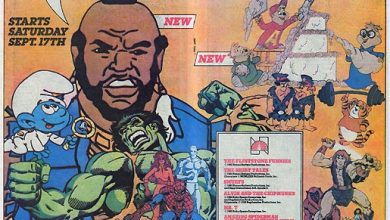Hey There Dollface!

Maybe you’ve heard about this year’s Sports Illustrated cover girl?
Even if you haven’t, you’ve heard of her. Or should that be it?
Because the model on the cover of SI’s 50th Anniversary over-wrap isn’t a woman. It isn’t even a person. It’s a doll – Barbie, to be precise.
Now there are a lot of different ways to parse this – this selection of a piece of plastic instead of an actual breathing living woman. The complete unattainability of this physique by actual humans. The placement of what is supposed to be a child’s toy in a position that is traditionally highly sexualized and specifically marketed for men to oogle. Even as a teaching moment.*
The campaign – which includes a commemorative doll which will be sold in the pink aisles at Target and a dedicated #unapologetic Twitter hashtag – is trying to play itself as empowerment with an undeniably positive message – girls and women can be both pretty and successful. I’m not sure I’m buying the mechanism, though.
The whole weird creepy implications that this has for childhood sexualization definitely bother me – particularly the image of what is marketed primarily as a toy for little girls, and which will be sold to them as a special edition through a mass market retailer (as opposed to, say, high end collector sites) – also gracing a magazine issue that is pretty widely acknowledged as being a…less than progressive and enlightened in its portrayal of women. But I’m much more struck by the message that a plastic toy, however iconic, is a reasonable stand-in for a human woman. It’s like they said, well, hey, fuck this objectification of women with enhanced breasts and sexy poses and photoshop, let’s just go for an actual object. And that, my friends, is much more creepy to me. It’s like they said, “why bother with the expense of flying actual beautiful successful women to the beach and dealing with the fuss and muss of hair and makeup and trailers and computer artists when we can slap a cute stripey piece of fabric smaller than a Post-it note on a plastic doll and stick her in a sandbox and say we’re celebrating, with deep #unapologetic sorry not sorry attitude, actual living beautiful successful women.”
Except really, not. After giving this lots of thought and reading lots of responses, I’m back where I started with my first reaction, which is “Wow. At least we know what they really think of cover models now.” And it’s really not very pretty.
Featured image via newsstands everywhere.
* For the record, although I’m a little conflicted about it, my daughter does have a couple of Barbie dolls, both of which are currently dressed in astronaut outfits somewhere in a pile of toys that includes dinosaurs, stuffed animals and goodness knows what else.





I’m a Barbie Girl, in a Barbie World. Life in plastic, it’s fantastic. You can brush my hair, undress me everywhere.
I know this might sound odd, but it isn’t the sexualization I mind. Humans are sexual beings and children see that and are going to play act out scenes that involve sex and romance and begin forming their own concepts of themselves as sexual adults just like they play act any other adult role.
What is disgraceful is the absurdly unrealistic body proportions that promote unhealthy ideals, and shallow obsession with a single model of feminine beauty masquerading as female empowerment. But it’s good that Barbie is on the cover of SI. We all know it’s reputation, and this only reaffirms that image.
As for Barbie as a toy, while I deeply wish she had proportions that didn’t emphasize unrealistic beauty standards, what really matters is how the kids play with them. Girls who are exposed to many areas of interest in different ways and who have their strengths and personal interests encouraged do just fine. Sadly it is most often only those girls who grow up in a position of economic privilege and with similar peers who receive that sort of upbringing.
I agree with this on a lot of levels. In terms of the image itself, it’s actually one of the better ones of Barbie as a concept – I have a difficult time finding fault with it as an image of something that, for better or worse, is iconic. The juxtaposition of this image over the *actual* cover bother me a lot more than Barbie’s unrealistic proportions, to be honest, at least in this context. The idea that little girls might be attracted to this image of Barbie and then flip it open to find half naked women posing provacatively for the male gaze and internalize that as an (or even the) appropriate outlet for their own sexuality, is a big part of my underlying issue on the sexualization front.
I don’t think there is a girl or woman in America who hasn’t internalized that posing provocatively for the male gaze is (appropriate or not) a mainstream outlet for heterosexual female sexuality. It is EVERYWHERE. I read something about the cover of the original Fancy Nancy book being that sort of pose just a week or two ago. And I’ve already seen my four year old daughter and her friends imitating such poses during their play fashion shows. This isn’t even a drop in the bucket.
And just so I’m clear, I didn’t mean to suggest that poor parents are failing their daughters. Rather, society is failing many poor kids by not providing sufficient resources to low income parents and schools in economically depressed communities.